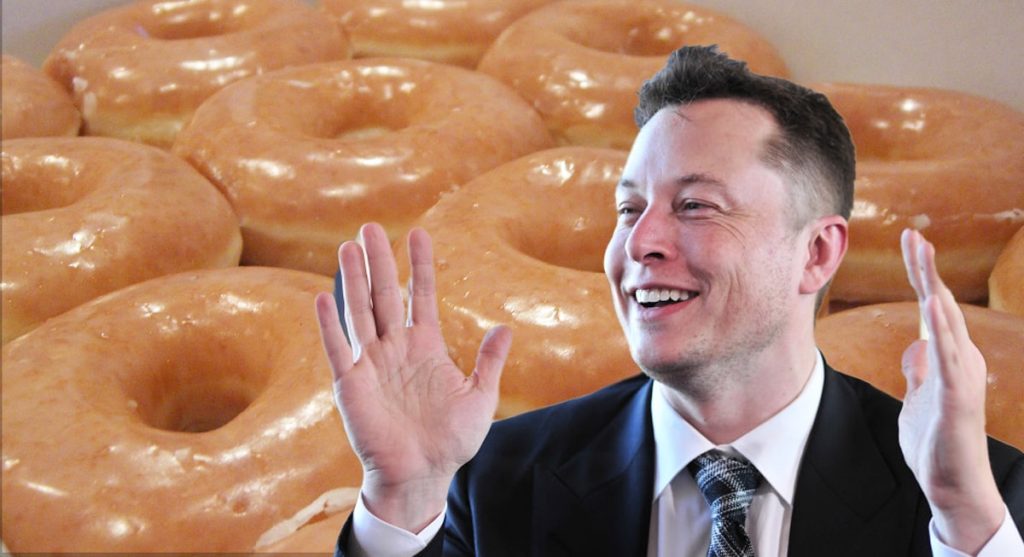In the high-stakes world of tech, every byte and pixel matters—but what about every bite and sip? From meticulously calculated breakfast routines to eccentric dinner choices, the eating habits of Silicon Valley’s elite are as unique and innovative as the technologies they’ve pioneered. Here’s a peek into the kitchens and dining tables of some of the industry’s most influential figures. Ready to see what fuels the brains behind your favorite tech giants? Let’s dig in!
Richard Branson’s Tea to Bedtime Island Rhythm
Richard Branson’s day kicks off with a whopping 20 cups of English Breakfast tea—his secret weapon. On his private oasis, Necker Island, he starts with a fresh fruit salad or muesli and sometimes spices it up with kipper. The Virgin Group co-founder mixes business with pleasure, preferring meetings at lunch to keep things light. Evening time is all about social dinners, where ideas flow as freely as the stories. After a day juggling family time and exercise, he winds down by 11 p.m. Just another day in paradise!
Jeff Bezos’ Sunday Pancakes and Octopus
Jeff Bezos starts his Sundays in a surprisingly simple way—whipping up pancakes from a Betty Crocker cookbook. Yes, even the Amazon titan uses a recipe guide! His breakfast game can get a bit wild though, like that time he ordered Mediterranean octopus during a meeting, a nod to his adventurous business spirit. Despite the relaxed mornings, Bezos stays on his toes with a strict fitness routine guided by his personal trainer, balancing his health with his hectic billionaire lifestyle. Who knew?
Mark Cuban’s Cookie Cravings and Veggie Ventures
Mark Cuban might be a powerhouse in the boardroom, but his breakfast is surprisingly simple: coffee and two high-protein, low-carb cookies from Alyssa’s Cookies, a business he backs. And yes, there are days he munches on these cookies for breakfast, lunch, and dinner! When he’s craving comfort food, Mark goes for a custom McDonald’s salad—jazzed up with corn, cottage cheese, and relish. Since turning vegetarian, his meals might seem unconventional, but they perfectly suit his dynamic lifestyle.
Bill Gates Loves Diet Coke, Cheeseburgers, and Space Drinks
Bill Gates has an affinity for Diet Coke, consuming three to four cans daily, and his quirky dietary choices extend to breakfast with Cocoa Puffs or sometimes skipping it altogether. His love for cheeseburgers is well-known, along with his less conventional cravings like Tang, the orange-flavored drink mix famous for its space missions. The Microsoft co-founder’s dietary habits offer a window into the balance he strikes between a busy life and maintaining some normalcy through familiar foods.
Steve Jobs’ Fruitarian Feasts and Carrot Crunches
Steve Jobs often limited his diet to one or two types of food for weeks, such as carrots and apples, or adhering strictly to a fruitarian diet. His approach to food was interwoven with his minimalist lifestyle, at times believing his diet eliminated body odor, thus reducing his need for deodorants or regular showers. The late Apple CEO’s intense focus on his diet also played a role in his initial approach to combating his pancreatic cancer with a diet heavy in juiced fruits and vegetables.
Elon Musk Is All About Donuts and Mars Bars
Elon Musk has notoriously erratic eating habits. He often skips breakfast or opts for quick sweets like Mars bars or donuts. Despite his attempts to cut down on sweets, his diet remains indulgent, favoring flavorful foods over healthful options. Lunch is often a hurried affair during work, but dinner presents an opportunity for longer, business-oriented meals, where the Tesla CEO prefers French and barbecue cuisines.
Mark Zuckerberg Once Hunted His Own Food
Mark Zuckerberg once spent a year eating only meat from animals he personally killed. It wasn’t just about the hunt; it was about connecting deeply with his food sources. This bold dietary experiment led to unique dining experiences, like the time he served Jack Dorsey, former Twitter CEO, goat meat that he himself had hunted. This approach to eating mirrors his commitment to ethical consumption, showing a side of the Facebook founder that goes far beyond social media innovation.
Jack Dorsey Goes For One Meal a Day and Weekend Fasts
Speaking of Jack Dorsey, he isn’t just about tweaking algorithms; he’s also fine-tuned his diet to the extremes. From dabbling in veganism to trying the Paleo diet, he’s gone on to practice intermittent fasting—eating just one meal a day during weekdays and fasting all weekend. He swears this regimen sharpens his focus, a prime example of Silicon Valley’s obsession with biohacking. The Square CEO’s dietary strategies mean optimizing personal health with as much precision as software.
Bryan Johnson On Green Giant Smoothies And The Vegan Diet
Bryan Johnson isn’t just watching the clock—he’s rewinding it. His anti-aging regimen is no joke, starting with a vegan diet capped at 1,977 calories daily. But it’s not all salads and smoothies; his mornings kick off with a “green giant” concoction jam-packed with health-boosting goodies. Johnson’s dedication to disciplined eating and supplements isn’t just about staying fit—it’s about rewriting the rules of aging and living life to the fullest, one green sip at a time.
Sam Altman Is A Vegetarian Who Takes Metformin
Sam Altman’s wellness journey starts early—like, childhood-early. He’s been rocking the vegetarian lifestyle since way back when, supplementing with methyl B-12 and Omega-3 to keep things balanced. But he’s not just about the basics; he’s diving deep into the biohacking world with metformin, a diabetes drug rumored to have anti-aging powers. This proactive approach to health exhibits how the OpenAI CEO is not just shaping the future—he’s living it.
Warren Buffett Is A Coca-Cola Fan
Ever wondered what fuels Warren Buffett’s success? Turns out, it’s not just savvy investments—it’s Coca-Cola. The Oracle of Omaha sips on five cans a day, sticking to a diet reminiscent of carefree childhood days. For him, it’s not just about the taste; it’s about the joy of simplicity. His unusual eating habits might seem at odds with his financial genius, but they’re all part of the charm that sets him apart in the world of high finance.
Larry Ellison On Sushi, Culture, and Success
Larry Ellison has a taste for the finer things—particularly Japanese cuisine. He appreciates Japanese culture and even owns a Japanese-style estate in Woodside, California. When it comes to dining, the co-founder of Oracle opts for fresh, high-quality sushi. With a passion for sailing and outdoor activities, his diet is tailored to fuel high energy levels and overall wellness, ensuring he stays at the top of his game.
Tim Cook Swears By Protein-Rich Foods And Smoothies
Rise and shine—it’s Tim Cook’s time to shine! The Apple CEO kicks off his day before the sun rises, hitting the ground running with cycling and gym workouts. But it’s not just about breaking a sweat; his diet is the real powerhouse. Packed with protein and health-conscious smoothies, his meals fuel him through marathon workdays. This disciplined approach is the secret sauce behind his precision and efficiency at the helm of Apple.
Sundar Pichai Keeps It Simple With Vegetarianism
Sundar Pichai, the brain behind Alphabet, keeps things simple—even when it comes to food. Rooted in his Indian heritage, his vegetarian diet mirrors his preference for a down-to-earth lifestyle. He sticks to light, traditional Indian dishes, steering clear of heavy meals to keep his mind sharp for the challenges of leading Google’s parent company.
Satya Nadella On Spices And Culinary Fusion
Satya Nadella, the Microsoft executive chairman, focuses on a balanced diet inspired by his Indian heritage. He incorporates a variety of spices and flavors that reflect a blend of traditional and modern culinary practices. His approach to food parallels his management style, which emphasizes diversity, integration, and innovation. He is known to partake in meals that not only nourish but also inspire, using dining as a way to connect with colleagues and foster a collaborative work environment.



